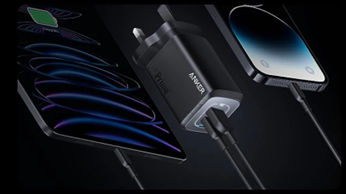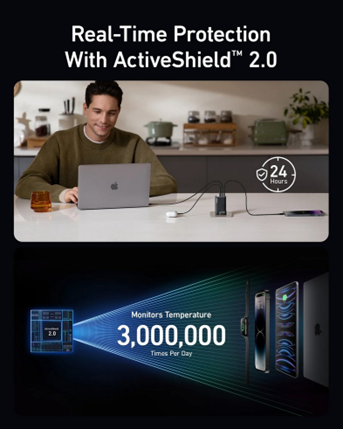Choosing the appropriate iPhone charger is critical to ensuring that your device charges effectively and safely. With so many different types of chargers available, it might be difficult to choose which one is ideal for you. Whether you want quicker charging, more convenience, or compatibility with your iPhone model, understanding the distinctions between charger types can help you make an informed decision. In this article, we will look at the many kinds of chargers, aspects to consider, and how to choose the best option to match your charging needs.

Understanding Different Types of iPhone Chargers
Lightning Cable Chargers
Lightning cable chargers are the most prevalent, having been in use since the iPhone 5. They include a compact, rectangular connection that plugs straight into the iPhone's charging port. These chargers are widely accessible and include both Apple-branded and third-party models. In addition to charging, Lightning cords may sync and transfer data. They are compatible with most iPhone models, making them a dependable and universal choice for many consumers. However, they may not provide the fastest charging rates when compared to newer choices like USB-C, yet they remain a standard for iPhone charging.
USB-C Chargers
USB-C chargers are the current charging method for recent iPhone models, beginning with the iPhone 8. This charger has a reversible, oval-shaped connection that is speedier and more adaptable than the Lightning cable. USB-C chargers may supply more power, resulting in quicker charging speeds, especially when used with the appropriate power adaptor. USB-C cables can also charge other devices, such as iPads and MacBooks, making them a more versatile charging solution. If speed is important, USB-C chargers are an excellent choice; however, you may need to invest in the necessary cable and adaptor.
Wireless Chargers
Wireless chargers use Qi technology to charge your iPhone without the need to connect a cord. Wireless charging works by placing your phone on a charging station and transferring electricity wirelessly. This approach is extremely handy and reduces wear and tear on charging ports; however, it is typically slower than cable charging alternatives. Wireless charging rates differ depending on the charger's power output and whether your iPhone supports rapid wireless charging. It's suited for people who value ease and organization over speed. However, keep in mind that it requires appropriate accessories and may not be the most efficient charging method.

Factors to Consider When Choosing a Charger
Compatibility with Your iPhone Model
Compatibility with your iPhone model is an important consideration when selecting a charger. Newer iPhone models (iPhone 8 and beyond) support both USB-C and Lightning chargers, whereas older versions (iPhone 6 and prior) utilize a Lightning cable charger. Verify that the charger you choose is compatible with the charging capability and port type of your iPhone. Be sure your phone supports USB-C fast charging before buying a charger, because some iPhone models also offer this capability. A conventional Lightning charger will work well for earlier iPhone models, but USB-C or wireless charging can speed up charging for more recent models.
Charging Speed and Performance
Charging speed is a crucial consideration when selecting a charger, particularly for consumers who require their iPhones to be charged rapidly. USB-C chargers provide the quickest charging speeds, with newer iPhones charging up to 50% in 30 minutes when coupled with the appropriate adaptor. Lightning cable chargers, although still functional, are often slower and may not enable rapid charging unless used in conjunction with a suitable power adapter. Wireless charging is handy yet sluggish, making it best for overnight charging or when you're not in a hurry. Always assess your charging speed requirements before purchasing to avoid annoyance with lengthy charging durations.
Durability and Cable Length
Durability and cable length are important considerations when selecting a charger. Bending, fraying, and heat exposure all cause cables to wear out over time, affecting charging efficiency and safety. Choose chargers with stronger cables or braided designs, since they tend to last longer. Consider the cable's length, which is dependent on your charging configuration. Shorter cables are ideal for travel or rapid charging, whilst longer cords provide more flexibility, particularly when charging in bed or at a workstation. Ensuring that the charger is robust and the appropriate length for your needs might improve your entire charging experience.
Conclusion
Selecting the best iphone charger involves considering compatibility, charging speed, and durability. Lightning cords are still a dependable option for most users, while USB-C provides quicker charging speeds for newer models. Wireless chargers are fantastic for convenience, but they charge more slowly. When selecting a charger, make sure it matches your iPhone model, prioritize quicker charging if necessary, and choose a robust cable length that fits your daily routine. With these considerations in mind, you may have a dependable and efficient charging experience that suits your individual requirements.
